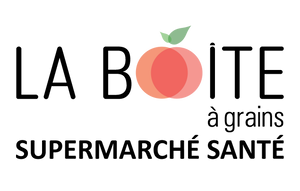Seaweed or sea vegetables have been gaining in popularity in recent years, particularly because of their benefits. Despite their greater accessibility, they remain little known. This is why we offer you a short guide that will demystify this marine food.


The role of seaweed and its benefits
Seaweed has been on the menu of the Pacific peoples and the vast majority of Asians for several hundred years. Most edible seaweeds are of marine origin, while freshwater seaweeds are mostly toxic. This is one of the reasons why, before the beginning of international food trade, seaweed was not on the menu of Westerners.
Some seaweeds are edible, while others are used in the processing industry or in childcare as fertilizer.
In the kitchen and in alternative medicine, seaweed is considered a superfood because it has a multitude of health benefits. Seaweed is a source of :
- Dietary fiber ;
- Iodine: an essential mineral for thyroid health;
- Electrolytes and a multitude of marine minerals;
- Vanadium: a mineral that preliminary research suggests may prevent the onset of type 2 diabetes;
- Vegetable proteins and vitamin B12 (sought after by vegans);
- Plant iron: easily absorbed by the body;
- Zinc: essential for immune and reproductive health;
- Omega 3: vegetable source.
In addition, seaweed has beneficial properties for:
- Cardiovascular health: seaweed has an anticoagulant and antithrombotic action, in addition to lowering cholesterol levels, especially bad cholesterol (LDL);
- Fight cancer: anti-inflammatory and antioxidant properties help fight inflammation and oxidative stress, two major contributors to the onset of many cancers;
- Estrogen: regulates estrogen production and reduces the risk of breast cancer related to excess estrogen.


Seaweed in the kitchen
Each seaweed has its own taste, shape and texture. Although there are more than 10,000 varieties, a few have particularly stood out in cooking. These are classified by color, according to their origin and properties.
Brown seaweeds are used in a variety of ways in the kitchen and include
- Arama Arama: a soft tasting seaweed, forming long filaments and often used in salads;
- Kombu a dark seaweed often available in leaves, used to season dishes;
- Wakamea cousin of kombu, used in soup recipes with miso soup ;
- Aleppo Aleppo: with a bright green color, available in flakes for seasoning;
- The hijikian almost black seaweed, which looks like a spaghetti-like paste.
The best known red seaweeds are :
- The small seaweed a soft and tender seaweed of purple color;
- Noria well-known seaweed used in sushi making;
- Agar-agara gelatinous substance, often used in vegan cooking to replace bovine gelatin.
Blue-green algae are gaining in popularity and include:
- Chlorella rich in proteins and trace elements, widely popularized in recent years;
- Spirulina particularly rich in vitamin B12, now one of the most sold natural health products;
- Green caviar Green caviar: still unknown to Westerners, a very popular seaweed in the Philippines.
Try different kinds of seaweed in a variety of recipes to discover your preferences. To simplify your life, we suggest three recipes featuring this superfood. Come see us at La Boite à Grains for expert advice and what you need for your recipes. We're here for you!
Enjoy your discovery!
Véronique Cousineau, ND, NHN


